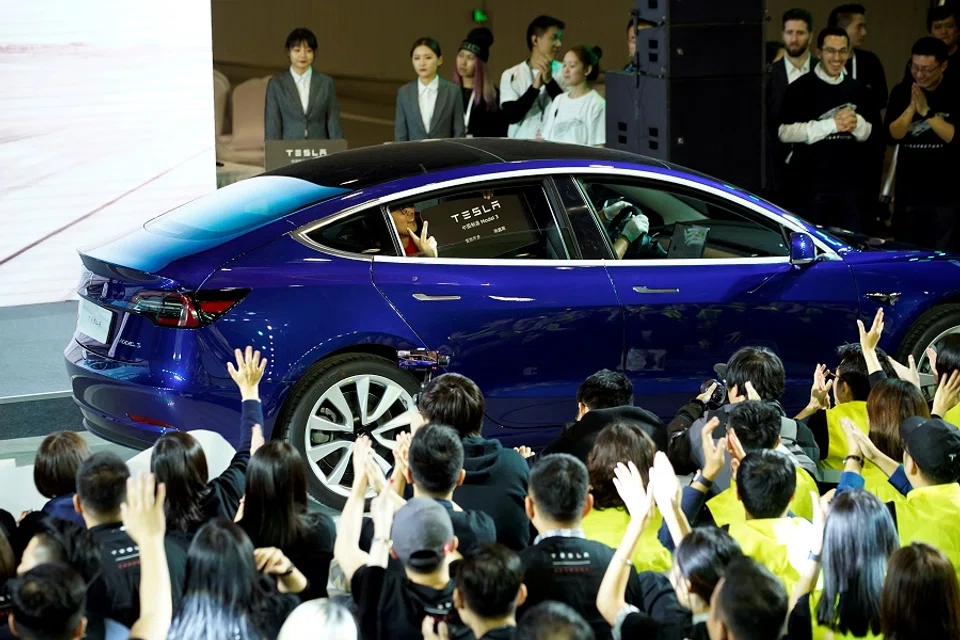Are smart cars really smart? Ways not to be held hostage by apps and tech
Chinese academic Zhang Tiankan looks at Tesla's recent network outage incident in September and remembers a similar one suffered by Chinese consumers in May this year - a no-response "smart" car or a "missing" one on your connected car app is no fun at all. Zhang says while technology is useful, we must be aware that over-reliance can leave us vulnerable to malfunctions or prone to disparaging those who have yet to embrace the digital age.

According to Electrek, a US-based website covering electric transport, on the morning of 23 September, Tesla suffered a "complete network outage with internal systems being down", leading to its inability to process deliveries and orders.
From 11am EDT, Tesla owners were unable to connect to their cars via the mobile app to unlock and start their cars, although some were able to do so via bluetooth. The same issue affected Tesla's solar energy products as well, with users unable to monitor their systems.
The network outage was a global one. Car owners affected were from different regions of the US, such as San Francisco, Boston, New York, and Chicago, as well as Russia and European countries such as the UK and Germany.

But this is not the first time that Tesla has encountered such a mishap. On 7 March 2017, it suffered an even more serious network outage that led to its app and application programming interface (API) being down for almost 24 hours. And on the night of 13 May 2020, some Tesla car owners in China experienced a massive downtime on their mobile apps. They were unable to unlock their cars via their phone key, retrieve information about their cars, or even light up their dashboards or their central control touchscreens. The outage lasted four hours and many owners resorted to "driving blind".
Life stops the moment the internet is disconnected.
Be smart but also smart-proof
In the smart era we live in where man's daily activities are gradually being smart- technology enabled, smart cars are playing a leading role. While self-driving cars have not fully hit the roads or become a reality, some smart and semi-smart cars have already made it into our lives. Tesla's keyless electric car, which unlocks and starts up via a mobile app, is one such example. Keyless technology can bring great convenience to people as one no longer needs to carry keys or be afraid of losing them.
On the flip side, however, once there is a problem with the app, people would be unable to unlock their cars or start it up. Some car owners involved in the Tesla network outage claimed that they had phoned the helpline for two hours to no avail, while others waited for over four hours but still could not unlock their cars. Who is going to be responsible for the damages and losses incurred as a result of this incident? While it may be impossible to calculate the losses incurred by car owners worldwide, the impact is clear judging from Tesla's stock indexes. Following the network outage on 23 September, Tesla shares plunged 10.34% at the end of the day, closing at US$380.36 per share and shedding US$40.9 billion (roughly S$55.6 billion) in its market value.

It was only Tesla's internal systems that went down on 23 September, but car owners around the globe were unable to drive their cars as a result. This is perhaps a lesson to those who blindly believe that one can do anything and go anywhere with an app in hand.
...an elderly person without a smartphone and thus no health code app was chased off public transport in China.
Much app-rehension
By extension, in the case of a global network outage due to damaged or broken fibre-optic cables caused by natural disasters such as earthquakes and tsunamis or man-made disasters such as war, not just car owners but anyone using online payment methods such as WeChat, Alipay, PayPal, Apple Pay and Venmo would be affected. Paying for their meals, shopping, entering stores (if it requires facial scanning), or even taking public transport would be a challenge. Life stops the moment the internet is disconnected.
Apps can potentially rule the world and our lives, and are already in the process of doing so. When people rely on their phones and mobile apps for their every need, the downsides of technology are revealed. As much as technology brings great convenience to people, it brings great inconvenience as well, restricting and even inhibiting people's daily activities and lives. For example, an elderly person without a smartphone and thus no health code app was chased off public transport in China. Such incidents speak of discrimination arising from technological progress, and the catastrophe resulting from having an over-reliance on technology.

The problem is whether there is a limit to our reliance on technology. This limit should be determined by factors such as people-centricity, convenience, and flexibility. Although technology was designed to bring convenience and improve efficiency - we can now go cashless, drive without a key fob (electronic device to open the door or start the vehicle), and be rid of many inconveniences - if it malfunctions, we have to consider other alternatives in order that our convenience would not be compromised and daily routines would not be disrupted.
Don't discard the old
A better solution would be to have a backup or use two systems - that is, to be able to use the app and the key fob for cars, and to be able to use both cash and online systems for payment. In other words, neither key fobs nor cash payment methods should be eliminated.
Tesla's China-made Model 3 vehicles only come with an NFC key card, not the physical key, which owners are to separately purchase at approximately 1,000 RMB apiece...

During the network outage on 23 September, a user filed a complaint on DownDetector, a website that provides a real-time overview of issues and outages with all kinds of services: "Tesla app froze on iPhone. Uninstalled and reinstalled and now it says "Error has occurred" (no kidding) and gives a reference ID. I still have the key card I can use though."
This complaint can be interpreted in several ways: in the event that an app reinstallation still fails, it is best to have a "primitive" solution at hand, that is, a key fob that is able to unlock the car and start it up. This is a backup plan that makes sure we do not put all our eggs in one basket. It is also a reminder that no matter how convenient an app is, we must have our key cards with us at all times.
The backup plan that Tesla devised for its cars has thus far been pretty unacceptable. Tesla's China-made Model 3 vehicles only come with an NFC key card, not the physical key, which owners are to separately purchase at approximately 1,000 RMB apiece, adding on to the cost of owning a car. While the cost is not exorbitant, it would still affect the sales and use of the car.
...a Chinese Tesla car owner posted online that his car was missing from the app when he was trying to use the navigation system.

Besides, the point of having an app unlock a car is to save owners the trouble of carrying a key fob around. Otherwise, it would be no different from the past when physical keys were used. Thus, car owners have become reliant on the app and stopped using key fobs. This is especially true of North American Tesla car owners who do not have the habit of carrying their physical key fobs with them, and hence putting them in a pickle when the Tesla app fails to connect.
Another problem with app-controlled vehicles is that to your nasty surprise, the vehicle shown in connected car apps may not be yours. On 21 August, a Chinese Tesla car owner posted online that his car was missing from the app when he was trying to use the navigation system. Strangely, it turns out that his app was actually linked to five other Tesla cars located far away in Europe.
Furthermore, on 15 September, when a Mr Jin accessed his Tesla app, he saw that the car shown on screen was not his, but another car in Hengyang, Hunan. The vehicle identification code was still his though, and his car was actually parked in Chongqing.
They also run the risk of privacy and security leaks since car owners share a lot of private information on the Tesla app.
Always have a Plan B
Connected car apps do not guarantee a safe drive. They also run the risk of privacy and security leaks since car owners share a lot of private information on the Tesla app. If others control the app at will, private information could be leaked and lead to consequences ranging from infringement of privacy to serious financial losses.
Moreover, when self-driving cars become a reality in the future, their driving software apps could also experience network outages and would thus need to be driven by humans instead. Thus, manual driving systems must also be installed in self-driving cars and cannot be eliminated completely. In addition, at least one licensed driver must also sit in a self-driving car at any one time.

What this means is that people-centric technologies should also provide traditional solutions to those who are temporarily lagging behind in using technology and apps or when a malfunction happens. This means that daily activities should not be subject to an app; without an app, one should still be able to go about their lives, and not be disallowed to board a bus. In the same vein, shopping malls and hotels should also allow people to pay by cash.
These are actually supplements to technology and can be called life's Plan B. While the traditional Plan B seems outdated and old-fashioned compared to the modern and advanced Plan A, it should be allowed to coexist with Plan A. Otherwise, such technology without backup and human support will not go far - it will be lame and can only hobble on.



![[Photos] Fact versus fiction: The portrayal of WWII anti-Japanese martyrs in Taiwan](https://cassette.sphdigital.com.sg/image/thinkchina/3494f8bd481870f7c65b881fd21a3fd733f573f23232376e39c532a2c7593cbc)

